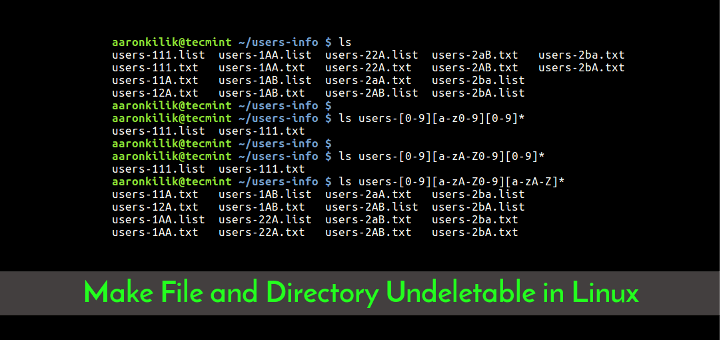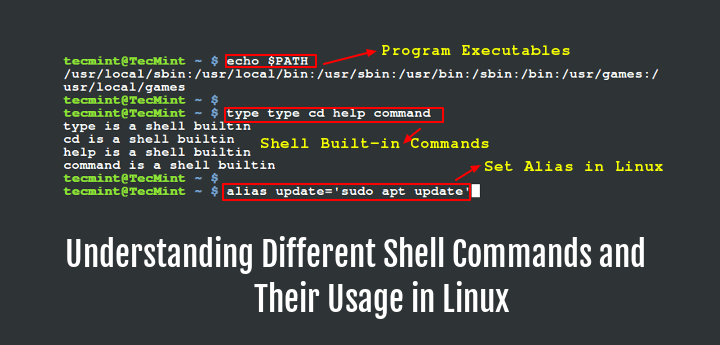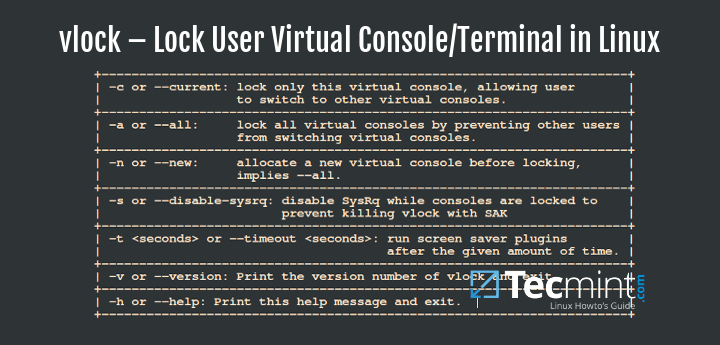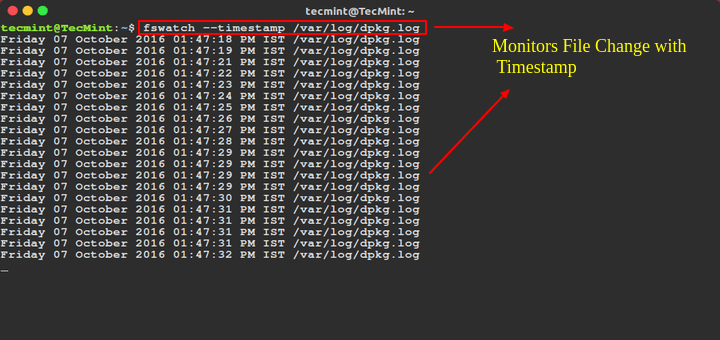The Nmap aka Network Mapper is an open source and a very versatile tool for Linux system/network administrators. Nmap is used for exploring networks, perform security scans, network audit and finding open ports on remote machine. It scans for Live hosts, Operating systems, packet filters and open ports running on remote hosts.

I’ll be covering most of NMAP usage in two different parts and this is the first part of nmap serious. Here in this setup, I have used two servers without firewall to test the working of the Nmap command.
- 192.168.0.100 – server1.tecmint.com
- 192.168.0.101 – server2.tecmint.com
Nmap command usage
# nmap [Scan Type(s)] [Options] {target specification}
How to Install NMAP in Linux
Most of the today’s Linux distributions like Red Hat, CentOS, Fedoro, Debian and Ubuntu have included Nmap in their default package management repositories called Yum and APT. The both tools are used to install and manage software packages and updates. To install Nmap on distribution specific use the following command.
# yum install nmap [on Red Hat based systems] $ sudo apt-get install nmap [on Debian based systems]
Once you’ve install latest nmap application, you can follow the example instructions provided in this article.
1. Scan a System with Hostname and IP Address
The Nmap tool offers various methods to scan a system. In this example, I am performing a scan using hostname as server2.tecmint.com to find out all open ports, services and MAC address on the system.
Scan using Hostname
[root@server1 ~]# nmap server2.tecmint.com Starting Nmap 4.11 ( http://www.insecure.org/nmap/ ) at 2013-11-11 15:42 EST Interesting ports on server2.tecmint.com (192.168.0.101): Not shown: 1674 closed ports PORT STATE SERVICE 22/tcp open ssh 80/tcp open http 111/tcp open rpcbind 957/tcp open unknown 3306/tcp open mysql 8888/tcp open sun-answerbook MAC Address: 08:00:27:D9:8E:D7 (Cadmus Computer Systems) Nmap finished: 1 IP address (1 host up) scanned in 0.415 seconds You have new mail in /var/spool/mail/root
Scan using IP Address
[root@server1 ~]# nmap 192.168.0.101 Starting Nmap 4.11 ( http://www.insecure.org/nmap/ ) at 2013-11-18 11:04 EST Interesting ports on server2.tecmint.com (192.168.0.101): Not shown: 1674 closed ports PORT STATE SERVICE 22/tcp open ssh 80/tcp open http 111/tcp open rpcbind 958/tcp open unknown 3306/tcp open mysql 8888/tcp open sun-answerbook MAC Address: 08:00:27:D9:8E:D7 (Cadmus Computer Systems) Nmap finished: 1 IP address (1 host up) scanned in 0.465 seconds You have new mail in /var/spool/mail/root
2. Scan using “-v” option
You can see that the below command with “-v” option is giving more detailed information about the remote machine.
[root@server1 ~]# nmap -v server2.tecmint.com
Starting Nmap 4.11 ( http://www.insecure.org/nmap/ ) at 2013-11-11 15:43 EST
Initiating ARP Ping Scan against 192.168.0.101 [1 port] at 15:43
The ARP Ping Scan took 0.01s to scan 1 total hosts.
Initiating SYN Stealth Scan against server2.tecmint.com (192.168.0.101) [1680 ports] at 15:43
Discovered open port 22/tcp on 192.168.0.101
Discovered open port 80/tcp on 192.168.0.101
Discovered open port 8888/tcp on 192.168.0.101
Discovered open port 111/tcp on 192.168.0.101
Discovered open port 3306/tcp on 192.168.0.101
Discovered open port 957/tcp on 192.168.0.101
The SYN Stealth Scan took 0.30s to scan 1680 total ports.
Host server2.tecmint.com (192.168.0.101) appears to be up ... good.
Interesting ports on server2.tecmint.com (192.168.0.101):
Not shown: 1674 closed ports
PORT STATE SERVICE
22/tcp open ssh
80/tcp open http
111/tcp open rpcbind
957/tcp open unknown
3306/tcp open mysql
8888/tcp open sun-answerbook
MAC Address: 08:00:27:D9:8E:D7 (Cadmus Computer Systems)
Nmap finished: 1 IP address (1 host up) scanned in 0.485 seconds
Raw packets sent: 1681 (73.962KB) | Rcvd: 1681 (77.322KB)
Scan Multiple Hosts
You can scan multiple hosts by simply writing their IP addresses or hostnames with Nmap.
[root@server1 ~]# nmap 192.168.0.101 192.168.0.102 192.168.0.103 Starting Nmap 4.11 ( http://www.insecure.org/nmap/ ) at 2013-11-11 16:06 EST Interesting ports on server2.tecmint.com (192.168.0.101): Not shown: 1674 closed ports PORT STATE SERVICE 22/tcp open ssh 80/tcp open http 111/tcp open rpcbind 957/tcp open unknown 3306/tcp open mysql 8888/tcp open sun-answerbook MAC Address: 08:00:27:D9:8E:D7 (Cadmus Computer Systems) Nmap finished: 3 IP addresses (1 host up) scanned in 0.580 seconds
4. Scan a whole Subnet
You can scan a whole subnet or IP range with Nmap by providing * wildcard with it.
[root@server1 ~]# nmap 192.168.0.* Starting Nmap 4.11 ( http://www.insecure.org/nmap/ ) at 2013-11-11 16:11 EST Interesting ports on server1.tecmint.com (192.168.0.100): Not shown: 1677 closed ports PORT STATE SERVICE 22/tcp open ssh 111/tcp open rpcbind 851/tcp open unknown Interesting ports on server2.tecmint.com (192.168.0.101): Not shown: 1674 closed ports PORT STATE SERVICE 22/tcp open ssh 80/tcp open http 111/tcp open rpcbind 957/tcp open unknown 3306/tcp open mysql 8888/tcp open sun-answerbook MAC Address: 08:00:27:D9:8E:D7 (Cadmus Computer Systems) Nmap finished: 256 IP addresses (2 hosts up) scanned in 5.550 seconds You have new mail in /var/spool/mail/root
On above output you can see that nmap scanned a whole subnet and gave the information about those hosts which are Up in the Network.
5. Scan Multiple Servers using last octet of IP address
You can perform scans on multiple IP address by simple specifying last octet of IP address. For example, here I performing a scan on IP addresses 192.168.0.101, 192.168.0.102 and 192.168.0.103.
[root@server1 ~]# nmap 192.168.0.101,102,103 Starting Nmap 4.11 ( http://www.insecure.org/nmap/ ) at 2013-11-11 16:09 EST Interesting ports on server2.tecmint.com (192.168.0.101): Not shown: 1674 closed ports PORT STATE SERVICE 22/tcp open ssh 80/tcp open http 111/tcp open rpcbind 957/tcp open unknown 3306/tcp open mysql 8888/tcp open sun-answerbook MAC Address: 08:00:27:D9:8E:D7 (Cadmus Computer Systems) Nmap finished: 3 IP addresses (1 host up) scanned in 0.552 seconds You have new mail in /var/spool/mail/root
6. Scan list of Hosts from a File
If you have more hosts to scan and all host details are written in a file , you can directly ask nmap to read that file and perform scans. Let’s see how to do that.
Create a text file called “nmaptest.txt” and define all the IP addresses or hostname of the server that you want to do a scan.
[root@server1 ~]# cat > nmaptest.txt localhost server2.tecmint.com 192.168.0.101
Next, run the following command with “iL” option with nmap command to scan all listed IP address in the file.
[root@server1 ~]# nmap -iL nmaptest.txt Starting Nmap 4.11 ( http://www.insecure.org/nmap/ ) at 2013-11-18 10:58 EST Interesting ports on localhost.localdomain (127.0.0.1): Not shown: 1675 closed ports PORT STATE SERVICE 22/tcp open ssh 25/tcp open smtp 111/tcp open rpcbind 631/tcp open ipp 857/tcp open unknown Interesting ports on server2.tecmint.com (192.168.0.101): Not shown: 1674 closed ports PORT STATE SERVICE 22/tcp open ssh 80/tcp open http 111/tcp open rpcbind 958/tcp open unknown 3306/tcp open mysql 8888/tcp open sun-answerbook MAC Address: 08:00:27:D9:8E:D7 (Cadmus Computer Systems) Interesting ports on server2.tecmint.com (192.168.0.101): Not shown: 1674 closed ports PORT STATE SERVICE 22/tcp open ssh 80/tcp open http 111/tcp open rpcbind 958/tcp open unknown 3306/tcp open mysql 8888/tcp open sun-answerbook MAC Address: 08:00:27:D9:8E:D7 (Cadmus Computer Systems) Nmap finished: 3 IP addresses (3 hosts up) scanned in 2.047 seconds
7. Scan an IP Address Range
You can specify an IP range while performing scan with Nmap.
[root@server1 ~]# nmap 192.168.0.101-110 Starting Nmap 4.11 ( http://www.insecure.org/nmap/ ) at 2013-11-11 16:09 EST Interesting ports on server2.tecmint.com (192.168.0.101): Not shown: 1674 closed ports PORT STATE SERVICE 22/tcp open ssh 80/tcp open http 111/tcp open rpcbind 957/tcp open unknown 3306/tcp open mysql 8888/tcp open sun-answerbook MAC Address: 08:00:27:D9:8E:D7 (Cadmus Computer Systems) Nmap finished: 10 IP addresses (1 host up) scanned in 0.542 seconds
8. Scan Network Excluding Remote Hosts
You can exclude some hosts while performing a full network scan or when you are scanning with wildcards with “–exclude” option.
[root@server1 ~]# nmap 192.168.0.* --exclude 192.168.0.100 Starting Nmap 4.11 ( http://www.insecure.org/nmap/ ) at 2013-11-11 16:16 EST Interesting ports on server2.tecmint.com (192.168.0.101): Not shown: 1674 closed ports PORT STATE SERVICE 22/tcp open ssh 80/tcp open http 111/tcp open rpcbind 957/tcp open unknown 3306/tcp open mysql 8888/tcp open sun-answerbook MAC Address: 08:00:27:D9:8E:D7 (Cadmus Computer Systems) Nmap finished: 255 IP addresses (1 host up) scanned in 5.313 seconds You have new mail in /var/spool/mail/root
9. Scan OS information and Traceroute
With Nmap, you can detect which OS and version is running on the remote host. To enable OS & version detection, script scanning and traceroute, we can use “-A” option with NMAP.
[root@server1 ~]# nmap -A 192.168.0.101 Starting Nmap 4.11 ( http://www.insecure.org/nmap/ ) at 2013-11-11 16:25 EST Interesting ports on server2.tecmint.com (192.168.0.101): Not shown: 1674 closed ports PORT STATE SERVICE VERSION 22/tcp open ssh OpenSSH 4.3 (protocol 2.0) 80/tcp open http Apache httpd 2.2.3 ((CentOS)) 111/tcp open rpcbind 2 (rpc #100000) 957/tcp open status 1 (rpc #100024) 3306/tcp open mysql MySQL (unauthorized) 8888/tcp open http lighttpd 1.4.32 MAC Address: 08:00:27:D9:8E:D7 (Cadmus Computer Systems) No exact OS matches for host (If you know what OS is running on it, see http://www.insecure.org/cgi-bin/nmap-submit.cgi). TCP/IP fingerprint: SInfo(V=4.11%P=i686-redhat-linux-gnu%D=11/11%Tm=52814B66%O=22%C=1%M=080027) TSeq(Class=TR%IPID=Z%TS=1000HZ) T1(Resp=Y%DF=Y%W=16A0%ACK=S++%Flags=AS%Ops=MNNTNW) T2(Resp=N) T3(Resp=Y%DF=Y%W=16A0%ACK=S++%Flags=AS%Ops=MNNTNW) T4(Resp=Y%DF=Y%W=0%ACK=O%Flags=R%Ops=) T5(Resp=Y%DF=Y%W=0%ACK=S++%Flags=AR%Ops=) T6(Resp=Y%DF=Y%W=0%ACK=O%Flags=R%Ops=) T7(Resp=Y%DF=Y%W=0%ACK=S++%Flags=AR%Ops=) PU(Resp=Y%DF=N%TOS=C0%IPLEN=164%RIPTL=148%RID=E%RIPCK=E%UCK=E%ULEN=134%DAT=E) Uptime 0.169 days (since Mon Nov 11 12:22:15 2013) Nmap finished: 1 IP address (1 host up) scanned in 22.271 seconds You have new mail in /var/spool/mail/root
In above Output, you can see that nmap is came up with TCP/IP fingerprint of the OS running on remote hosts and being more specific about the port and services running on the remote hosts.
10. Enable OS Detection with Nmap
Use the option “-O” and “-osscan-guess” also helps to discover OS information.
[root@server1 ~]# nmap -O server2.tecmint.com Starting Nmap 4.11 ( http://www.insecure.org/nmap/ ) at 2013-11-11 17:40 EST Interesting ports on server2.tecmint.com (192.168.0.101): Not shown: 1674 closed ports PORT STATE SERVICE 22/tcp open ssh 80/tcp open http 111/tcp open rpcbind 957/tcp open unknown 3306/tcp open mysql 8888/tcp open sun-answerbook MAC Address: 08:00:27:D9:8E:D7 (Cadmus Computer Systems) No exact OS matches for host (If you know what OS is running on it, see http://www.insecure.org/cgi-bin/nmap-submit.cgi). TCP/IP fingerprint: SInfo(V=4.11%P=i686-redhat-linux-gnu%D=11/11%Tm=52815CF4%O=22%C=1%M=080027) TSeq(Class=TR%IPID=Z%TS=1000HZ) T1(Resp=Y%DF=Y%W=16A0%ACK=S++%Flags=AS%Ops=MNNTNW) T2(Resp=N) T3(Resp=Y%DF=Y%W=16A0%ACK=S++%Flags=AS%Ops=MNNTNW) T4(Resp=Y%DF=Y%W=0%ACK=O%Flags=Option -O and -osscan-guess also helps to discover OS R%Ops=) T5(Resp=Y%DF=Y%W=0%ACK=S++%Flags=AR%Ops=) T6(Resp=Y%DF=Y%W=0%ACK=O%Flags=R%Ops=) T7(Resp=Y%DF=Y%W=0%ACK=S++%Flags=AR%Ops=) PU(Resp=Y%DF=N%TOS=C0%IPLEN=164%RIPTL=148%RID=E%RIPCK=E%UCK=E%ULEN=134%DAT=E) Uptime 0.221 days (since Mon Nov 11 12:22:16 2013) Nmap finished: 1 IP address (1 host up) scanned in 11.064 seconds You have new mail in /var/spool/mail/root
11. Scan a Host to Detect Firewall
The below command will perform a scan on a remote host to detect if any packet filters or Firewall is used by host.
[root@server1 ~]# nmap -sA 192.168.0.101 Starting Nmap 4.11 ( http://www.insecure.org/nmap/ ) at 2013-11-11 16:27 EST All 1680 scanned ports on server2.tecmint.com (192.168.0.101) are UNfiltered MAC Address: 08:00:27:D9:8E:D7 (Cadmus Computer Systems) Nmap finished: 1 IP address (1 host up) scanned in 0.382 seconds You have new mail in /var/spool/mail/root
12. Scan a Host to check its protected by Firewall
To scan a host if it is protected by any packet filtering software or Firewalls.
[root@server1 ~]# nmap -PN 192.168.0.101 Starting Nmap 4.11 ( http://www.insecure.org/nmap/ ) at 2013-11-11 16:30 EST Interesting ports on server2.tecmint.com (192.168.0.101): Not shown: 1674 closed ports PORT STATE SERVICE 22/tcp open ssh 80/tcp open http 111/tcp open rpcbind 957/tcp open unknown 3306/tcp open mysql 8888/tcp open sun-answerbook MAC Address: 08:00:27:D9:8E:D7 (Cadmus Computer Systems) Nmap finished: 1 IP address (1 host up) scanned in 0.399 seconds
13. Find out Live hosts in a Network
With the help of “-sP” option we can simply check which hosts are live and up in Network, with this option nmap skips port detection and other things.
[root@server1 ~]# nmap -sP 192.168.0.* Starting Nmap 4.11 ( http://www.insecure.org/nmap/ ) at 2013-11-18 11:01 EST Host server1.tecmint.com (192.168.0.100) appears to be up. Host server2.tecmint.com (192.168.0.101) appears to be up. MAC Address: 08:00:27:D9:8E:D7 (Cadmus Computer Systems) Nmap finished: 256 IP addresses (2 hosts up) scanned in 5.109 seconds
14. Perform a Fast Scan
You can perform a fast scan with “-F” option to scans for the ports listed in the nmap-services files and leaves all other ports.
[root@server1 ~]# nmap -F 192.168.0.101 Starting Nmap 4.11 ( http://www.insecure.org/nmap/ ) at 2013-11-11 16:47 EST Interesting ports on server2.tecmint.com (192.168.0.101): Not shown: 1234 closed ports PORT STATE SERVICE 22/tcp open ssh 80/tcp open http 111/tcp open rpcbind 3306/tcp open mysql 8888/tcp open sun-answerbook MAC Address: 08:00:27:D9:8E:D7 (Cadmus Computer Systems) Nmap finished: 1 IP address (1 host up) scanned in 0.322 seconds
15. Find Nmap version
You can find out Nmap version you are running on your machine with “-V” option.
[root@server1 ~]# nmap -V Nmap version 4.11 ( http://www.insecure.org/nmap/ ) You have new mail in /var/spool/mail/root
16. Scan Ports Consecutively
Use the “-r” flag to don’t randomize.
[root@server1 ~]# nmap -r 192.168.0.101 Starting Nmap 4.11 ( http://www.insecure.org/nmap/ ) at 2013-11-11 16:52 EST Interesting ports on server2.tecmint.com (192.168.0.101): Not shown: 1674 closed ports PORT STATE SERVICE 22/tcp open ssh 80/tcp open http 111/tcp open rpcbind 957/tcp open unknown 3306/tcp open mysql 8888/tcp open sun-answerbook MAC Address: 08:00:27:D9:8E:D7 (Cadmus Computer Systems) Nmap finished: 1 IP address (1 host up) scanned in 0.363 seconds
17. Print Host interfaces and Routes
You can find out host interface and route information with nmap by using “–iflist” option.
[root@server1 ~]# nmap --iflist Starting Nmap 4.11 ( http://www.insecure.org/nmap/ ) at 2013-11-11 17:07 EST ************************INTERFACES************************ DEV (SHORT) IP/MASK TYPE UP MAC lo (lo) 127.0.0.1/8 loopback up eth0 (eth0) 192.168.0.100/24 ethernet up 08:00:27:11:C7:89 **************************ROUTES************************** DST/MASK DEV GATEWAY 192.168.0.0/0 eth0 169.254.0.0/0 eth0
In above output, you can see that map is listing interfaces attached to your system and their respective routes.
18. Scan for specific Port
There are various options to discover ports on remote machine with Nmap. You can specify the port you want nmap to scan with “-p” option, by default nmap scans only TCP ports.
[root@server1 ~]# nmap -p 80 server2.tecmint.com Starting Nmap 4.11 ( http://www.insecure.org/nmap/ ) at 2013-11-11 17:12 EST Interesting ports on server2.tecmint.com (192.168.0.101): PORT STATE SERVICE 80/tcp open http MAC Address: 08:00:27:D9:8E:D7 (Cadmus Computer Systems) Nmap finished: 1 IP address (1 host up) sca
19. Scan a TCP Port
You can also specify specific port types and numbers with nmap to scan.
[root@server1 ~]# nmap -p T:8888,80 server2.tecmint.com Starting Nmap 4.11 ( http://www.insecure.org/nmap/ ) at 2013-11-11 17:15 EST Interesting ports on server2.tecmint.com (192.168.0.101): PORT STATE SERVICE 80/tcp open http 8888/tcp open sun-answerbook MAC Address: 08:00:27:D9:8E:D7 (Cadmus Computer Systems) Nmap finished: 1 IP address (1 host up) scanned in 0.157 seconds
20. Scan a UDP Port
[root@server1 ~]# nmap -sU 53 server2.tecmint.com Starting Nmap 4.11 ( http://www.insecure.org/nmap/ ) at 2013-11-11 17:15 EST Interesting ports on server2.tecmint.com (192.168.0.101): PORT STATE SERVICE 53/udp open http 8888/udp open sun-answerbook MAC Address: 08:00:27:D9:8E:D7 (Cadmus Computer Systems) Nmap finished: 1 IP address (1 host up) scanned in 0.157 seconds
21. Scan Multiple Ports
You can also scan multiple ports using option “-p“.
[root@server1 ~]# nmap -p 80,443 192.168.0.101 Starting Nmap 4.11 ( http://www.insecure.org/nmap/ ) at 2013-11-18 10:56 EST Interesting ports on server2.tecmint.com (192.168.0.101): PORT STATE SERVICE 80/tcp open http 443/tcp closed https MAC Address: 08:00:27:D9:8E:D7 (Cadmus Computer Systems) Nmap finished: 1 IP address (1 host up) scanned in 0.190 seconds
22. Scan Ports by Network Range
You can scan ports with ranges using expressions.
[root@server1 ~]# nmap -p 80-160 192.168.0.101
23. Find Host Services version Numbers
We can find out service’s versions which are running on remote hosts with “-sV” option.
[root@server1 ~]# nmap -sV 192.168.0.101 Starting Nmap 4.11 ( http://www.insecure.org/nmap/ ) at 2013-11-11 17:48 EST Interesting ports on server2.tecmint.com (192.168.0.101): Not shown: 1674 closed ports PORT STATE SERVICE VERSION 22/tcp open ssh OpenSSH 4.3 (protocol 2.0) 80/tcp open http Apache httpd 2.2.3 ((CentOS)) 111/tcp open rpcbind 2 (rpc #100000) 957/tcp open status 1 (rpc #100024) 3306/tcp open mysql MySQL (unauthorized) 8888/tcp open http lighttpd 1.4.32 MAC Address: 08:00:27:D9:8E:D7 (Cadmus Computer Systems) Nmap finished: 1 IP address (1 host up) scanned in 12.624 seconds
24. Scan remote hosts using TCP ACK (PA) and TCP Syn (PS)
Sometimes packet filtering firewalls blocks standard ICMP ping requests, in that case, we can use TCP ACK and TCP Syn methods to scan remote hosts.
[root@server1 ~]# nmap -PS 192.168.0.101 Starting Nmap 4.11 ( http://www.insecure.org/nmap/ ) at 2013-11-11 17:51 EST Interesting ports on server2.tecmint.com (192.168.0.101): Not shown: 1674 closed ports PORT STATE SERVICE 22/tcp open ssh 80/tcp open http 111/tcp open rpcbind 957/tcp open unknown 3306/tcp open mysql 8888/tcp open sun-answerbook MAC Address: 08:00:27:D9:8E:D7 (Cadmus Computer Systems) Nmap finished: 1 IP address (1 host up) scanned in 0.360 seconds You have new mail in /var/spool/mail/root
25. Scan Remote host for specific ports with TCP ACK
[root@server1 ~]# nmap -PA -p 22,80 192.168.0.101 Starting Nmap 4.11 ( http://www.insecure.org/nmap/ ) at 2013-11-11 18:02 EST Interesting ports on server2.tecmint.com (192.168.0.101): PORT STATE SERVICE 22/tcp open ssh 80/tcp open http MAC Address: 08:00:27:D9:8E:D7 (Cadmus Computer Systems) Nmap finished: 1 IP address (1 host up) scanned in 0.166 seconds You have new mail in /var/spool/mail/root
26. Scan Remote host for specific ports with TCP Syn
[root@server1 ~]# nmap -PS -p 22,80 192.168.0.101 Starting Nmap 4.11 ( http://www.insecure.org/nmap/ ) at 2013-11-11 18:08 EST Interesting ports on server2.tecmint.com (192.168.0.101): PORT STATE SERVICE 22/tcp open ssh 80/tcp open http MAC Address: 08:00:27:D9:8E:D7 (Cadmus Computer Systems) Nmap finished: 1 IP address (1 host up) scanned in 0.165 seconds You have new mail in /var/spool/mail/root
27. Perform a stealthy Scan
[root@server1 ~]# nmap -sS 192.168.0.101 Starting Nmap 4.11 ( http://www.insecure.org/nmap/ ) at 2013-11-11 18:10 EST Interesting ports on server2.tecmint.com (192.168.0.101): Not shown: 1674 closed ports PORT STATE SERVICE 22/tcp open ssh 80/tcp open http 111/tcp open rpcbind 957/tcp open unknown 3306/tcp open mysql 8888/tcp open sun-answerbook MAC Address: 08:00:27:D9:8E:D7 (Cadmus Computer Systems) Nmap finished: 1 IP address (1 host up) scanned in 0.383 seconds You have new mail in /var/spool/mail/root
28. Check most commonly used Ports with TCP Syn
[root@server1 ~]# nmap -sT 192.168.0.101 Starting Nmap 4.11 ( http://www.insecure.org/nmap/ ) at 2013-11-11 18:12 EST Interesting ports on server2.tecmint.com (192.168.0.101): Not shown: 1674 closed ports PORT STATE SERVICE 22/tcp open ssh 80/tcp open http 111/tcp open rpcbind 957/tcp open unknown 3306/tcp open mysql 8888/tcp open sun-answerbook MAC Address: 08:00:27:D9:8E:D7 (Cadmus Computer Systems) Nmap finished: 1 IP address (1 host up) scanned in 0.406 seconds You have new mail in /var/spool/mail/root
29. Perform a tcp null scan to fool a firewall
[root@server1 ~]# nmap -sN 192.168.0.101 Starting Nmap 4.11 ( http://www.insecure.org/nmap/ ) at 2013-11-11 19:01 EST Interesting ports on server2.tecmint.com (192.168.0.101): Not shown: 1674 closed ports PORT STATE SERVICE 22/tcp open|filtered ssh 80/tcp open|filtered http 111/tcp open|filtered rpcbind 957/tcp open|filtered unknown 3306/tcp open|filtered mysql 8888/tcp open|filtered sun-answerbook MAC Address: 08:00:27:D9:8E:D7 (Cadmus Computer Systems) Nmap finished: 1 IP address (1 host up) scanned in 1.584 seconds You have new mail in /var/spool/mail/root
That’s it with NMAP for now, I’ll be coming up more creative options of NMAP in our second part of this serious. Till then, stay tuned with us and don’t forget to share your valuable comments.






